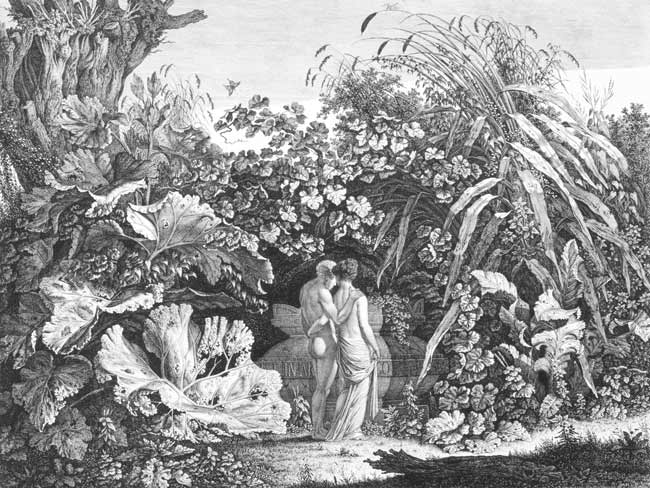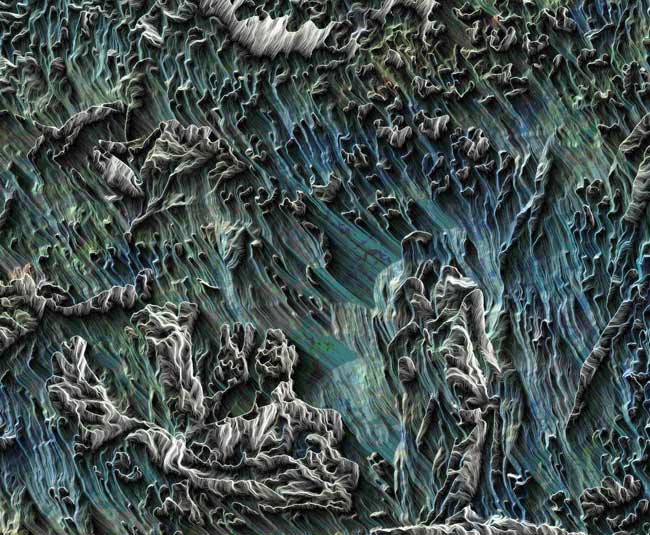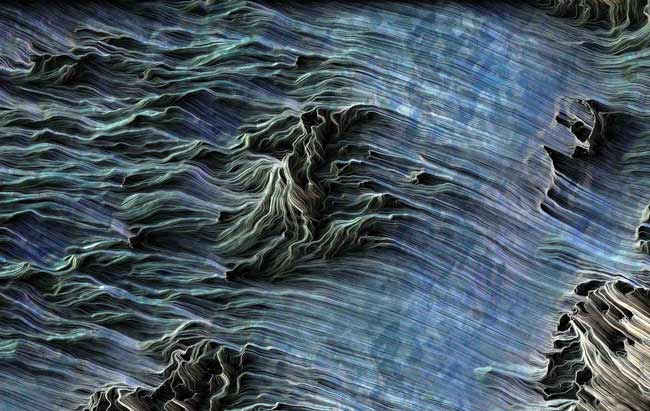Matteo Mauro, digital reinterpretations of Rococo engraving
The study of the technique of artistic printmaking and Rococo picture content, leads the artist Matteo Mauro’s research to a series of contemporary experiments to offer digital reinterpretations of Rococo theories of engraving. The author defines Micromegalic Inscriptions as computational approaches of generating dynamic engravings, from fictional landscapes to traced and abstracted capriccios, to inspire fantastical architectural designs. These digital creations, which lie in the realm of Generative Art, do not just reinterpret the mechanical processes of engraving, but being reproducible infinite times and anywhere, exemplify the evolution of mass production practices and the inevitable symbiosis between the man and the machine. Thus, morphogenic spontaneity and mathematical constraints are processed by a software, to create new metaphors to enrich traditional paradigms.

The series of artworks presented in this article reinterpret Wilhelm Kolbe’s etching “I too was in Arcadia”. An amazingly executed print that captivates the eye for its sublime line work as much as for its pictorial composition and content. Nature is controlled to create harmony. Rocailles hides behind the pictured, but are not explicit. A framing giant vegetation dwarfs the image content, activating the micromegalistic exchange. Finally, the foreshadow of the two human bodies has the potential of abstracting them in to silhouettes, offering to the eye of the observer a point of contact between reality and fantasy. The abstraction process aims to transfer the elegance of the source, into a contemporary aesthetic. The image-origin is traced with a fine weight line, thus the digital canvas is marked. Around those marks, the loop begins to run their infinite linear variations. The pixel’s strokes sense and react to the previous inscriptions. Conflict becomes either junction or repulsion. Creative perception and gestural action are totally computed.

The bodies of the two lovers partially dissolve, relating to the Rococo’s resistance to form finite figures. Besides, similarly to Rococo paintings these inscriptions do not follow the rectangular frame of the simulation, but, following the traced image, create abstracted forms of nature which frame the recognisable central silhouettes. A microscopic examination reveals the fragmented serpentine movements branching-out as in micromegalic fractal roots, or the systematically folding lines accumulating in the formation of surfaces.

There is an endless growth and metamorphosis from the smallest digital element (pixel) to the scale less computation painting. The continuous inscribed sinusoidal paths give to the artwork a sense of dynamic movement. From the simulation, the printed image captures and holds that sense of motion, which is typical of the rocaille motif. Of these creations, it is to be appreciated the tension between the systematic process of tracing and its potential to generate disorder, both harmonically coexisting in the chaos of uncountable lines in empathy and abstraction.
Matteo Mauro
Sep 2, 2017
